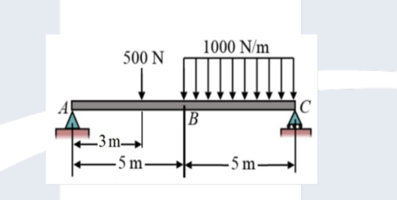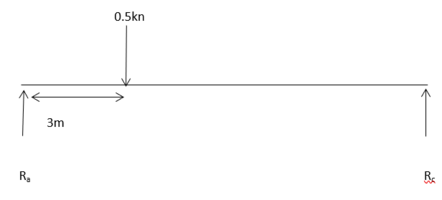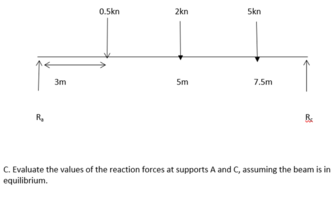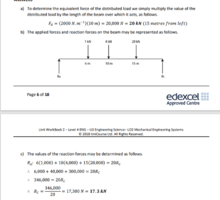Scott92
New member
- Joined
- Jun 11, 2022
- Messages
- 41
 Im not sure if anyone can help me with this one,
Im not sure if anyone can help me with this one,The beam is subjected to a point load of 500 N and a distributed load of 1000 N/m, as indicated in the diagram. The weight of the beam is 2000 N and may be considered as a 2 kN point load acting downwards at the middle of the beam
To determine the equivalent force of the distributed load we simply multiply the value of the distributed load by the length of the beam over which it acts, as follows.
Fd=(1000n.m-1)(5m)=5000n or 5kn
B. Sketch the beam with all the applied forces (including reaction and equivalent forces) at the correct position on the beam. Below is what ive got but how do i work out how far across the beam and what force is being applied ? Thanks for any help




